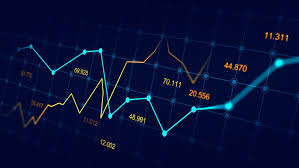
What is Forex Trading?
Forex trading, also known as foreign exchange trading or currency trading, refers to the process of buying and selling currencies in the foreign exchange market with the aim of making a profit. The Forex market is one of the largest financial markets in the world, with a daily trading volume exceeding $6 trillion. Traders engage in Forex trading to speculate on price movements of currency pairs, using various strategies and tools to maximize their potential returns. You can learn more about this dynamic market at what is trading forex fx-trading-uz.com.
How Forex Trading Works
Forex trading involves the exchange of one currency for another, typically in pairs. The price of a currency pair is determined by the relative strength or weakness of the currencies involved. For instance, if you are trading the EUR/USD pair, you are speculating on the value of the Euro against the US Dollar. If you believe that the Euro will strengthen against the Dollar, you would buy the EUR/USD pair; conversely, if you think the Euro will weaken, you would sell it.
The Role of Leverage in Forex Trading
One of the most alluring aspects of Forex trading is the ability to use leverage. Leverage allows traders to control larger positions with a smaller amount of capital. For example, with a leverage of 100:1, a trader can control a position worth $100,000 with just $1,000 in their trading account. While leverage can amplify profits, it also increases risk, and traders must exercise caution when using it.
Types of Forex Traders
The Forex market caters to various types of traders, each with their own strategies and approaches:

- Day Traders: These traders buy and sell currencies within the same trading day, often making quick profits from small price movements.
- Swing Traders: Swing traders hold positions for several days or weeks, aiming to profit from larger price swings.
- Scalpers: This type of trader makes numerous trades throughout the day to capture small price changes, often holding positions for only seconds or minutes.
- Position Traders: These traders take a more long-term approach, holding positions for weeks, months, or even years, based on fundamental analysis.
Currency Pairs in Forex
In Forex trading, currencies are traded in pairs. Each currency pair consists of two currencies: the base currency and the quote currency. The base currency is the first currency listed in the pair, and the quote currency is the second. For example, in the EUR/USD pair, the Euro is the base currency, and the US Dollar is the quote currency.
Currency pairs are categorized into three main types:
- Major Pairs: These pairs involve the US Dollar and the most widely traded currencies, such as EUR/USD, USD/JPY, and GBP/USD.
- Minor Pairs: These pairs do not involve the US Dollar but include other major currencies, such as EUR/GBP and AUD/NZD.
- Exotic Pairs: These pairs consist of a major currency paired with a currency from an emerging market, such as USD/TRY (Turkish Lira) or EUR/ZAR (South African Rand).
Factors Influencing Forex Prices
Various factors can influence currency prices and create volatility in the Forex market. Some of the key factors include:
- Economic Indicators: Reports on employment, GDP, inflation, and trade balance can significantly impact currency valuations.
- Interest Rates: Central banks set interest rates, which can affect a currency’s strength. Higher interest rates tend to attract foreign capital, increasing demand for that currency.
- Geopolitical Events: Political instability, natural disasters, or changes in government can create uncertainty and impact currency values.
- Market Sentiment: Traders’ perceptions and expectations can drive currency prices, regardless of the underlying fundamentals.

How to Get Started with Forex Trading
If you’re interested in getting started with Forex trading, here are some steps you can follow:
- Educate Yourself: Learn the basics of Forex trading, including how to read charts, understand market conditions, and develop a trading plan.
- Choose a Reliable Broker: Research and select a reputable Forex broker that offers the features you need, such as low spreads, a user-friendly platform, and good customer support.
- Open a Trading Account: Sign up for a demo account to practice trading with virtual money before trading with real funds.
- Develop a Trading Strategy: Create a trading plan that outlines your goals, risk tolerance, and strategies for entering and exiting trades.
- Begin Trading: Once you feel confident, start trading with a live account, keeping track of your performance and continually learning from your experiences.
Risks Associated with Forex Trading
While Forex trading offers significant profit opportunities, it is important to be aware of the risks involved:
- Market Risk: Currency prices can be highly volatile, leading to potential losses.
- Leverage Risk: While leverage can increase profits, it can also magnify losses, leading to significant financial risk.
- Counterparty Risk: This refers to the risk that your broker may default on your trades or that they may not execute trades at the expected prices.
- Psychological Risk: Emotional decision-making can lead to poor trading choices, highlighting the importance of discipline and sticking to a trading plan.
Conclusion
Forex trading is a dynamic and potentially rewarding endeavor, allowing traders to participate in one of the largest financial markets globally. By educating yourself, practicing with a demo account, and developing a solid trading strategy, you can navigate the challenges of Forex trading successfully. Remember to stay informed about market trends, economic indicators, and global events that can influence currency prices. Whether you’re a day trader or a long-term investor, understanding the intricacies of Forex will help you make informed decisions and enhance your trading experience.